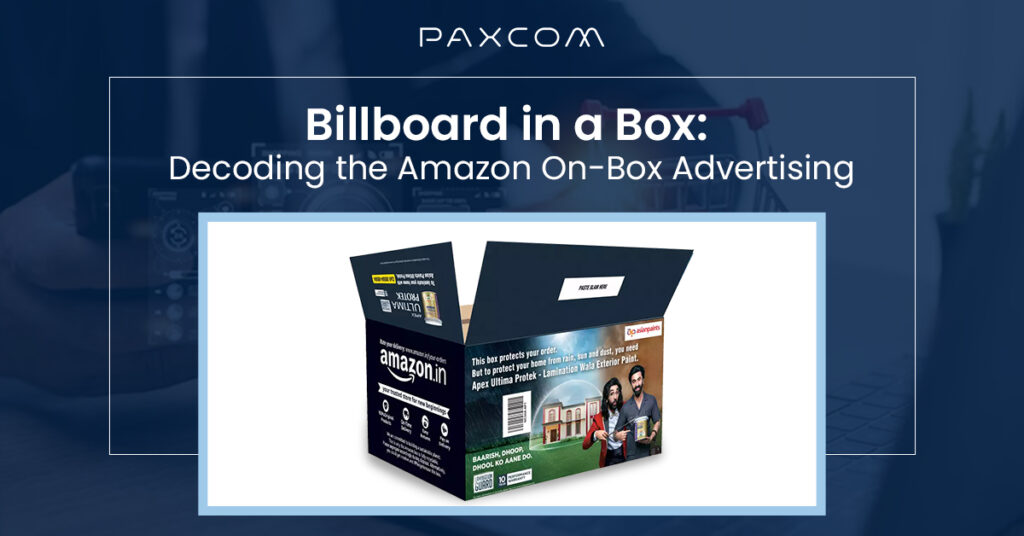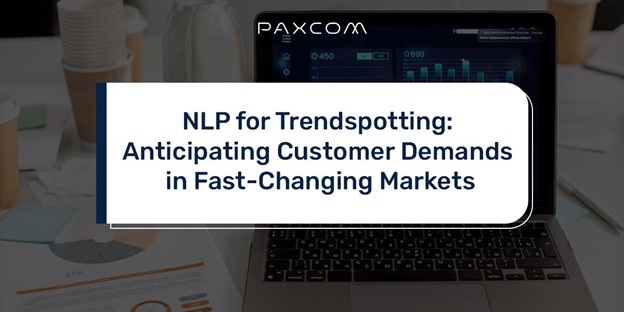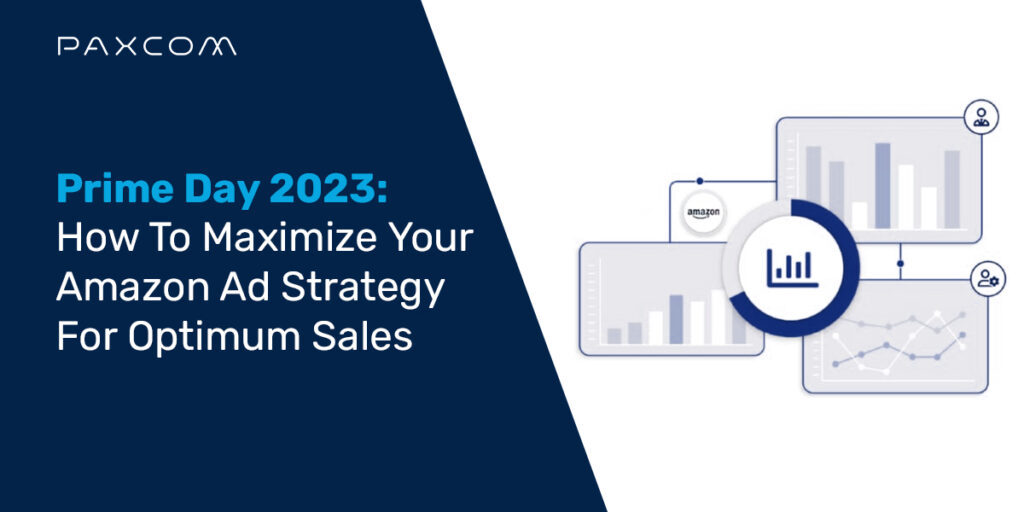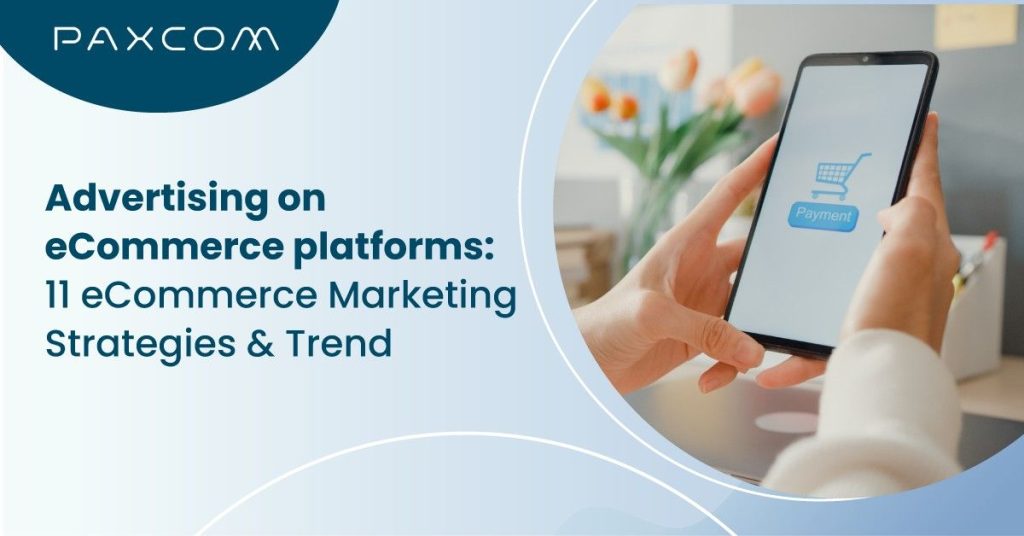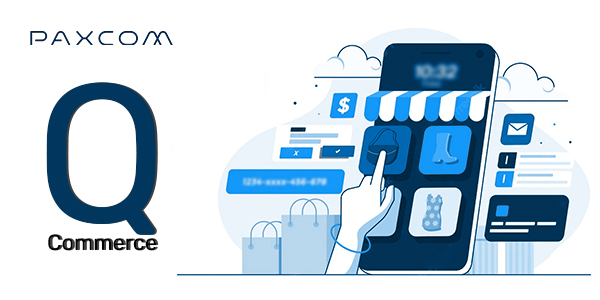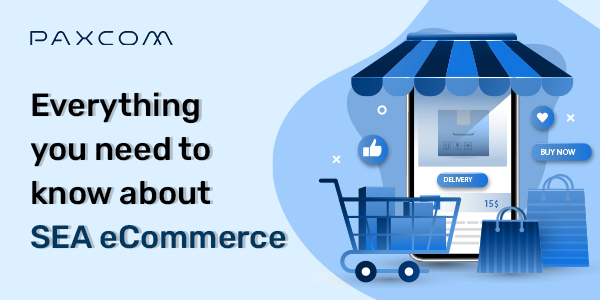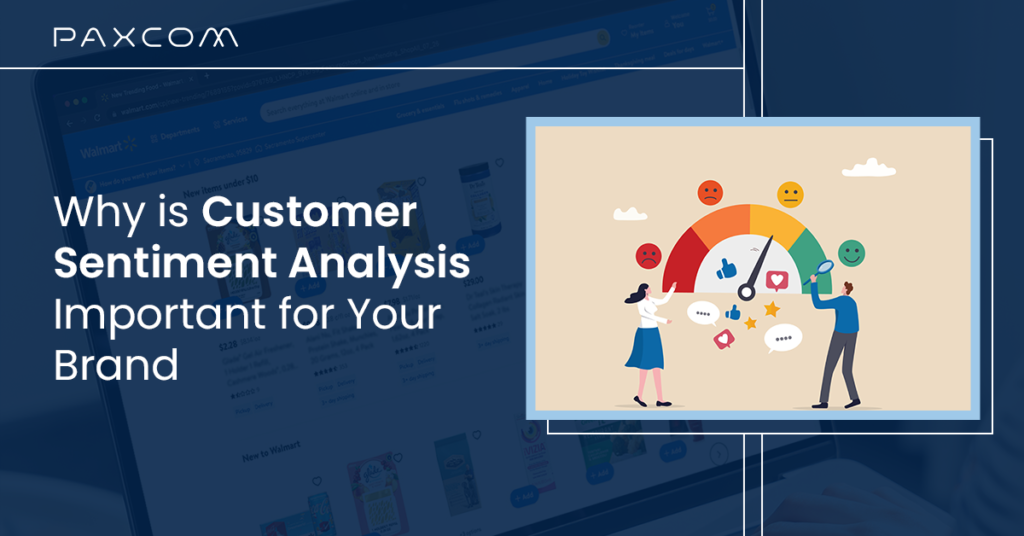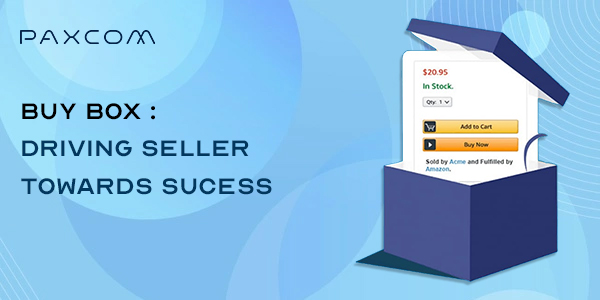
Paxcom resources

Paxcom resources
Amazon Digital Shelf Analytics with Kinator
September 10, 2025
You’ve got the products, the ambition, and the blueprint. But here’s the million-dollar question: Should...
How to Succeed on Amazon vs. eBay: A Seller’s Guide
September 8, 2025
You’ve got the products, the ambition, and the blueprint. But here’s the million-dollar question: Should...
Win the AI shelf with GEO (Generative Engine Optimization)
September 5, 2025
Search Just Had Its Midlife Crisis (And Your Brand Wasn’t Invited to Therapy) Picture this:...
Amazon Prime Day 2025: Maximizing Amazon Ad Strategy For Optimum Sales
July 3, 2025
Amazon Prime Day 2025 isn’t just longer—it’s smarter. Running from July 8–11 in the USA...
Amazon Prime Day 2025 Content Strategy: How to Optimize Listings for Sales & Visibility
July 2, 2025
By 2025, Q-Commerce will account for 25% of global e-commerce, driven by AI, hyperlocal networks...
Quick Commerce Edition: A Guide to Swiggy Instamart Ads
May 26, 2025
Who would’ve thought we’d be living in a world where everything you need is just...
Leveraging Digital Shelf Analytics to Optimize Flipkart’s Sales Funnel
May 26, 2025
Launched a new product on Flipkart, only to find it buried beneath a sea of...
Bridging the Gap Between Online and Offline Shelf with Data Analytics
May 22, 2025
What if your physical shelf was invisible to your digital shopper? With consumers increasingly shopping...
Revolution of Amazon’s AI in the eCommerce Industry
May 21, 2025
By 2025, Q-Commerce will account for 25% of global e-commerce, driven by AI, hyperlocal networks...
Flipkart’s Brand Stores: A New Era of Online Brand Engagement
April 8, 2025
Flipkart, a true pioneer, has not only revolutionized how we shop but also, crucially, how...
From Data Overload to Strategic Insights: How to Simplify Complex eCommerce Metrics
April 3, 2025
Introduction The explosion of eCommerce data has made it challenging for brands to extract meaningful...
Your 2025 Roadmap for Digital Shelf Success in Q-Commerce
April 2, 2025
By 2025, Q-Commerce will account for 25% of global e-commerce, driven by AI, hyperlocal networks...
From Reports to Results: How Businesses Can Benefit from Real-Time Dashboards
April 2, 2025
In the digital age, data isn’t just king—it’s the lifeblood of innovation. Yet, while 59%...
Business Analytics Software for Product Analytics & E-Commerce
March 27, 2025
Success hinges not on intuition alone, but on the ability to translate data into decisive...
Unveiling Data Analytics Trends in E-Commerce: A Guide for Retailers
March 12, 2025
E-commerce analytics has become an essential tool for retailers looking to understand customer behavior, optimize...
How AI and Analytics Are Redefining Consumer Insight
March 12, 2025
Did you know that nearly 80% of new product launches fail, despite brands spending months...
Consumer Expectations in 2025: What eCommerce and qCommerce Brands Need to Know
February 20, 2025
The future is here. By 2025, consumers will no longer just prefer fast, seamless, and...
From Storytelling to Sales: Scaling Your Brand with Amazon MX Player (formerly Mini TV)
February 11, 2025
In today’s dynamic digital landscape, brands are constantly seeking consumer attention. Video content has emerged...
The 2025 eCommerce Blueprint: What Gen Z shoppers expect from the brands in 2025
February 10, 2025
Picture this: you’re scrolling through TikTok at 2 AM, and a creator unboxes a product...
The Rise of Green Tech in E-Commerce
January 3, 2025
As the world becomes increasingly interconnected through digital platforms, e-commerce has emerged as a driving...
Web 5.0: A New Era in eCommerce
January 3, 2025
The internet has undergone remarkable transformations since its inception, and with each evolution, new opportunities...
Zero-Party Data: The Future of Customer Insights
January 3, 2025
Marketers today are buzzing about “zero-party data” as a key driver of personalized marketing in...
Navigating Growth: Actionable Strategies For Emerging CPG Brands
December 30, 2024
The online sales account for 25% of total CPG sales as compared to 2022, observing...
Securing the Future: Data Privacy in the Analytics Age
December 30, 2024
In today’s hyper-connected world, data has become the new currency. But with this newfound wealth...
AI-Powered Business Intelligence Tools: The Next Generation
December 30, 2024
In today’s data-driven world, businesses are drowning in information. Traditional Business Intelligence (BI) tools, while...
2024 eCommerce Wrapped Trends: Hits & Misses
December 27, 2024
2024 was a game-changing year for eCommerce and qCommerce, marked by remarkable milestones and disruptions...
Scaling New Heights: Cloud Computing’s Role in Data Analytics
December 24, 2024
Imagine a world where data is not just a pile of numbers, but a treasure...
Dark Social’s significance: What every eCommerce brand needs to know in 2025
December 19, 2024
As we move into 2025, the digital marketing landscape for eCommerce brands is more competitive...
Voice Commerce: The Future of Shopping in 2025 and Beyond
December 10, 2024
Imagine this: You’re in the middle of making breakfast, hands covered in flour, and you...
Navigating the Future of Beauty & Luxury eCommerce: Trends, Opportunities, and Challenges in 2025
December 6, 2024
The beauty and luxury sectors have long been symbols of prestige, exclusivity, and opulence. However...
Quick Commerce: End-to-End Digital Shelf Management
December 6, 2024
We are at a stage where many of us have transitioned from occasionally buying online...
Quick Commerce Edition: Getting Started With Zepto Ads
November 25, 2024
Zepto: Groceries Delivered in Ten Minutes Imagine this: You’re lounging at home, craving a snack...
Mastering Growth in Grocery E-Commerce: Winning Strategies for 2025
November 25, 2024
The grocery e-commerce sector in India is experiencing a transformative shift, driven by urbanization, increased...
AI for Data Visualization: Transforming Insights into Actionable Intelligence
November 25, 2024
In today’s data-driven world, businesses are overwhelmed with vast amounts of information. Whether it’s sales...
Augmented Reality in Data Visualization: The Next Visual Frontier
November 22, 2024
In an era dominated by data, visualizing complex information has never been more critical. As...
Blockchain Meets Data Analytics: Enhancing Security and Insights
October 11, 2024
In the digital age, organizations are continually seeking ways to safeguard their data while extracting...
Deep Learning in Data Analysis: Beyond Traditional Models
October 3, 2024
Imagine you’re a detective trying to solve a complex case. Traditional data analysis is like...
Advanced-Data Modeling Techniques: Bridging AI and Stats
September 11, 2024
In the early days of data science, statistics held supreme. It was the key to...
Benefits of an eCommerce Analytics Dashboard
September 11, 2024
Imagine having a tool that could help you understand your customers’ needs, predict market trends...
Data Analytics Platforms: The Imperative for Modern Business Success
September 10, 2024
In today’s fast-paced business landscape, data analytics has emerged as a cornerstone of strategic decision-making...
AI in Healthcare: Transforming Patient Care with Predictive Analytics
September 6, 2024
Imagine a future where doctors can predict your health risks before they even manifest. No...
ALL YOU NEED TO KNOW ABOUT 09.09 DAY SALE RUSH
August 30, 2024
One of the most significant eCommerce flash sales events is right at your doorstep. Yes...
Data Analytics: The Logistics Lifeline for the Modern Supply Chain
August 12, 2024
The world of logistics is no longer just about trucks, trains, and warehouses. It’s a...
Amazon Buy Box Guide 2024
August 8, 2024
Amazon, the global e-commerce giant, boasts an impressive annual revenue of over $574 billion in...
On-Shelf Availability: Ensuring Products are Ready for Customers
August 7, 2024
For online sellers, On-Shelf Availability (OSA) is more than just a buzzword—it’s a crucial factor...
Scaling Your Business in 2024: Lazada and Shopee Edition
August 2, 2024
In the Southeast Asian economy, eCommerce is booming, with Lazada and Shopee being the dominant...
Predictive Analytics Tools: Forecasting the Future of Business
July 29, 2024
In the business world, having insight into the future isn’t about magic; it’s about smart...
The Future of Predictive Analytics: What’s Next in 2024?
July 24, 2024
Imagine walking through a dense forest without a map, relying solely on instinct and guesswork...
Mastering Real-time Data Visualization: Techniques and Tools
July 16, 2024
In an era where data drives decision-making across industries, the ability to visualize data in...
Harnessing Data Analytics in Retail to Drive Customer Engagement
July 16, 2024
Imagine a retail world where customers walk into your store and are greeted by name...
Top MAchine Learning Tools in 2024: What you need to know
July 1, 2024
Imagine a world where machines learn from experience, not just follow instructions. In a world...
Prime Day 2024: A Guide to Optimise Content for Growth
June 27, 2024
Prime Day is around the corner, and everyone is gearing up for it. Amazon’s Prime...
Prime Day 2024: Maximise Your Amazon Ad Strategy For Optimum Sales
June 26, 2024
The biggest and most awaited event for brands and shoppers—Prime Day 2024—is just around the...
Business with DaaS: From Data to Informed Decisions
June 26, 2024
In today’s data-driven world, businesses sit on a goldmine of information. Yet, extracting the truepotential...
Big Data Solutions: Handling Massive Data Efficiently
June 20, 2024
Big data: it’s not just a buzzword; it’s the powerhouse behind today’s tech-savvy world. In...
Navigating Market Trends with AI-Driven Sentiment Analysis
June 11, 2024
In the rapidly evolving landscape of e-commerce, staying ahead of market trends is crucial for...
AI Ethics: The Critical Role of Governance and Best Practices
June 11, 2024
Imagine a world where artificial intelligence (AI) not only powers most of our daily interactions...
Big Data Analytics: Driving Business Growth in 2024
May 31, 2024
Think of your mind as a huge information collection that grows every time you meet...
Role of AI in Financial Analytics-From Data to Strategic Decisions
May 20, 2024
Introduction Let’s start with the question of the hour, “Just how big is AI in...
2024 and Beyond D2C Website Strategies for Marketing Success
April 19, 2024
In a rapidly evolving e-commerce landscape, direct-to-consumer (D2C) trends have emerged as a game-changer for...
Globalizing Your eCommerce Business: Best Practices
April 12, 2024
The world has become intertwined due to all the technological advancements. So are the businesses;...
Amazon PPC Dayparting
March 28, 2024
You’ve tested new keywords. Adjusted bids. Swapped out creatives. And still, your Amazon PPC ads...
Pricing Trends for 2024
March 7, 2024
In the dynamic landscape of e-commerce, pricing strategies have become the compass guiding businesses through...
Getting Started with Blinkit Ads
February 28, 2024
In the dynamic landscape of Quick Commerce, where speed is the name of the game...
Leveraging AI and ML in eCommerce
February 7, 2024
Looking back just a few years, there were only a handful of dedicated shopping outlets...
Data Visualization in Ecommerce
February 5, 2024
In the ever-expanding landscape of online shopping, businesses find themselves grappling/struggling with an abundance of...
Billboard in a Box: Decoding the Amazon On-Box Advertising
January 30, 2024
Storytelling has always been considered an art, and when combined with advertising, it can do...
Beyond the Buzz: The Evolution of Retail Media Networks
January 16, 2024
In the ever-evolving digital advertising landscape, Retail Media Networks have emerged as a lucrative avenue...
Quick commerce 101: A quick guide for brands to navigate
December 18, 2023
Adding qCommerce to eCommerce across different sectors has transformed the notion of order fulfilment. As...
Strategies for 2024: Black Friday and Cyber Monday
November 23, 2023
Black Friday and Cyber Monday are approaching soon, unlocking a treasure trove of opportunities for...
eCommerce Order Management – The Complete Guide
October 25, 2023
You’ve built your product catalog. Set up your store on Amazon, Flipkart, or your own...
Competitive Edge: Flipkart Initiative to Boost Online Seller Profit
September 28, 2023
Introduction The world of eCommerce is thriving, and keeping up with this ever-evolving industry is...
Elevating Sentiment Analysis with ONNX Runtime: A Success Story
September 5, 2023
Introduction In the rapidly evolving world of ecommerce, understanding customer sentiment is paramount for businesses...
Amazon Buy Box Guide 2023
September 5, 2023
Amazon, the global e-commerce giant, boasts an impressive annual revenue of over $250 billion. One...
Global E-commerce: Challenges Faced by Brands Selling Internationally
September 4, 2023
It’s incredible to look back and realize how far the e-commerce business has progressed. Global...
The Taste of Success: How Profit POS Elevates Dining Experiences
September 4, 2023
Introduction Running a restaurant is exciting, but it comes with a bunch of values to...
Ready for the 9.9 SEA Rush? Your Must-Have eCommerce Checklist
September 4, 2023
One of the most significant eCommerce flash sales events is right at your doorstep. Yes...
NLP for Trendspotting: Predicting Customer Demands in Evolving Markets
August 23, 2023
The world of eCommerce is like a constantly shifting landscape, where trends emerge and evolve...
Measuring Price Elasticity of Demand on Amazon
August 17, 2023
Think about the vast world of online shopping, where Amazon is the big boss. Brands...
Grocery E-commerce: Growth Strategies In The New Age
August 11, 2023
The rapid advancement of technology has revolutionized the way we shop, and the grocery industry...
Organic vs. Paid: Unraveling the Debate on Measuring Search KPIs
August 8, 2023
Our eCommerce specialist had a lively debate around organic vs. paid search, so why not...
Demystifying Retail Media: Understanding the Landscape and Its Impact
August 7, 2023
The world is evolving, and so are consumers’ preferences when it comes to shopping both...
10 Reasons to Switch to Profit for All Your Restaurant Needs
August 1, 2023
Running a restaurant can be both exciting and challenging. Wouldn’t it be wonderful if you...
How Generative AI Is Revolutionizing E-Commerce
July 31, 2023
The rise of technology has led to magnificent minds thinking altogether differently. The power of...
Amazon Ppc Advertising Fails: 11 Common Mistakes To Avoid
July 29, 2023
You’ve launched your product on Amazon, and it has everything a customer could want. A...
From Browsing to Buying: Boosting Digital Commerce with Visual Content
July 28, 2023
Raj, a 28-year-old tech enthusiast, is in the market for a gaming laptop. Excited about...
How Brands Can Use Omnichannel to Retain Customers
July 21, 2023
Imagine a shopper browsing a brand’s website, saving items to their cart on a mobile...
Amazon Halo Effect: Why it Matters and How to Capitalize on It
July 17, 2023
As an Amazon seller in today’s competitive landscape, it’s easy to feel discouraged when it...
The Rise of AI: How to Stay Ahead in the Landscape of eCommerce
July 4, 2023
Introduction If we discuss what Artificial Intelligence is, a few might start thinking about robots...
Rise of Subscription Commerce in the USA
July 4, 2023
In 2022, the global e-commerce market for subscriptions was worth $96.61 billion. By 2028, it...
Prime Day 2023: A Guide to Optimize Content for Growth
June 30, 2023
Prime Day is around the corner, and everyone is gearing up for it. Amazon’s Prime...
Total Growth Accountability: Navigating Digital Commerce Realities
June 22, 2023
In today’s fast-paced and ever-evolving digital landscape, businesses constantly seek new strategies to achieve sustainable...
Prime Day 2023: Maximize Your Amazon Ad Strategy For Optimum Sales
June 20, 2023
The biggest and most awaited event for the brands and shoppers – Prime Day 2023...
Your Go-to-Guide to Amazon Posts
June 19, 2023
In 2019, Amazon unveiled its Instagram-like platform, “Amazon Posts,” exclusively for registered sellers and brands...
Building a Robust Digital Shelf Analytics Framework
June 7, 2023
As the eCommerce industry continues to grow at an unprecedented pace, it has become crucial...
How Product Content Optimization Maximizes Brands’ Shelf Share
June 5, 2023
Introduction Are you facing issues with the listed products? Are you not reaching the expected...
Everything You Need to Know About Amazon Marketing Stream
May 24, 2023
Amazon is a trusted platform for consumers to find products and services. This makes the...
How To Deal With Unauthorized Third-Party Sellers In 2023?
May 22, 2023
Introduction Managing an eCommerce business across multiple channels presents a captivating and multifaceted venture. As...
Stock Availability: How to Manage and Improve with Kinator
May 4, 2023
Introduction In the fast-paced world of eCommerce, staying ahead of the curve means mastering the...
Omnichannel Acceleration in Online Retail
April 26, 2023
As global economic conditions hover, it’s necessary for companies to invest in solid omnichannel strategies...
Amazon Video Advertising – A Detailed Guide For Sellers
April 20, 2023
More than 300 million people use Amazon each month globally, and the United States alone...
eCommerce Marketing tips for growing your D2C store
April 10, 2023
The D2C industry has experienced a global surge in sales in the past few years...
Boost Promotions with eCommerce Promotion Management Software
April 4, 2023
Introduction Whenever we buy something, we try our best to get great deals and discounts...
3.3 SEA Checklist
March 2, 2023
Southeast Asia continues to emerge as a dominant market for eCommerce growth, with double-digit sales...
eCommerce Pricing Strategy: 7 Ways To Boost Your Sales
February 27, 2023
Are you tired of offering your products at the same price without seeing a significant...
How To Overcome The Gaps In eCommerce Marketing
February 14, 2023
eCommerce has observed massive growth on a global scale. It provides a boost to retailers...
Maximising Sales on Walmart Marketplace: Top 9 Strategies for Success
February 14, 2023
On each eCommerce platform, several strategies exist to improve sales! Boasting over 110 million monthly...
eCommerce Price Intelligence: Why Do You Need It?
January 17, 2023
The eCommerce landscape has witnessed explosive growth, paralleled by a significant surge in the percentage...
2023 Trending eCommerce Marketing Trends in the UK
January 12, 2023
As the eCommerce market booms, consumer demands also increase. A majority of consumers browse multiple...
A Guide to Digital Shelf Optimization
January 12, 2023
Brands are always trying to outdo one another in order to gain a greater market...
Digital eCommerce Risks: How to Identify and Reduce Them?
January 10, 2023
Imagine this: a customer clicks “Buy Now” on your website, excited to receive your product...
Multi-Channel Selling – What Needs To Be Done
January 5, 2023
There is no question that online selling plays a significant role in the economy today...
eCommerce Marketing strategies for 2023
December 14, 2022
The return of eCommerce to near normal, coupled with economic concerns, has led to a...
Social Commerce – The Emerging Landscape in India
December 12, 2022
The Indian social economy is in the throes of a revolution. This new form of...
Alternatives to Building an E-Commerce Team When Talent Is Scarce
December 12, 2022
Introduction The eCommerce landscape has become expansive over the last few years, and brands have...
What is Digital Shelf Analytics?
December 9, 2022
In the past few years, there has been an increase in online real-time economic activity...
Why Digital Shelf Analytics Is Important
December 8, 2022
eCommerce is constantly growing, and keeping up with new norms and criteria – while focusing...
Affiliate Programs: A Guide For eCommerce Brands
November 18, 2022
ECommerce is evolving, hence to keep up with the trends and technologies, you need to...
Retail Content Management Guide for Indian eCommerce Marketplaces
November 7, 2022
We all know how content weaves a buyer’s journey- awareness, consideration, decision — and ultimately...
Grocery eCommerce – Revenue Generating strategies for online retailers
November 1, 2022
With the rapid growth of online grocery shopping and delivery services, one thing is for...
How to Resell on Amazon
October 27, 2022
Did you consider making a profit by reselling products you purchased at discounted prices? This...
Amazon FAQs: Top questions answered by Paxcom’s experts
October 13, 2022
Generic – 1. How do I increase my Amazon sales? Amazon offers a wide variety...
Digital Shelf Monitoring Solution: 8 Must-Have Features
October 6, 2022
If you are a brand owner selling online or an employee trying to scale your...
5 Benefits of working with an eCommerce Agency
October 3, 2022
In this fast-paced digital world, the role of eCommerce agencies has become extensive as per...
Prepare Your eCommerce & qCommerce Store for the 2024 Holiday Season
September 29, 2022
The last quarter of the year is all about holidays and festivities across the globe...
How to get started with Flipkart Ads
September 23, 2022
There are more than 150 million + products from over 50,000 sellers on Flipkart. The...
Amazon Listing: A guide to creating a product listing on Amazon
September 14, 2022
Of all the things you’ll acquire when you become an Amazon FBA seller, no one’s...
How to Apply for Walmart Seller Center Account
August 31, 2022
In the dynamic world of eCommerce, finding the right platform to showcase and sell your...
Amazon Best Seller Badge – How to Sustain it in 2022?
August 26, 2022
The Amazon Best Seller Badge lets you differentiate your product from competitors, highlight how well...
Pricing Amazon Products: Optimize Listing for Profitability
August 24, 2022
Setting a pricing strategy for Amazon products as well as figuring out what price to...
August eCommerce Holiday Prep 2022: Winning strategies
August 5, 2022
As eCommerce sales events are becoming a bigger and bigger part of the shopping calendar...
Five reasons why to sell on Walmart
August 1, 2022
As of 2024, Walmart attracts a significant share of third-party sellers, reinforcing its position as...
Price Monitoring Software: A Boon For eCommerce Sellers in Their Journey
July 22, 2022
Let us go back to the days when the physical stores and markets saw a...
How to Start Selling Online in the UK?
July 19, 2022
As a business owner, sales play a pivotal role in expanding your brand. The transition...
Last-minute Prime day sale Retail readiness
July 11, 2022
Prime day sale is right around the corner! The Dates are out: July 12- 13...
A Guide To Sell On Etsy USA
June 27, 2022
Imagine a platform that empowers artists, crafters, and collectors to turn their passion into a...
How to sell on Best Buy Marketplace
June 23, 2022
Understanding Best Buy Marketplace Target Market Before diving into selling on Best Buy, it’s crucial...
How & Why to sell on Walmart Marketplace
June 16, 2022
Being a retailer, your goal is to attract as many consumers as possible and sell...
Guide to Online Retail Strategies to Scale Your eCommerce Business
June 7, 2022
Online sales now account for about one-quarter of the total retail market, as per Statista...
A Guide to selling on the Amazon UK
May 23, 2022
Imagine standing on the threshold of one of the world’s most lucrative eCommerce platforms. Amazon...
Amazon Marketing Services: All you need to know in 2024
May 17, 2022
Amazon has become the cornerstone of eCommerce, offering businesses an unparalleled platform to reach millions...
E-commerce Reselling- the next winning retail trend in India
May 10, 2022
When life puts you on the lockdown, sell online! That was the credo for...
E-commerce profitable drivers: Digital Shelf Analytics
May 2, 2022
When someone walks into a brick-and-mortar store, they may or may not know precisely what...
Everything you need to know about U.K. eCommerce
April 27, 2022
The United Kingdom is Europe’s most developed region for online shopping and has the 5th...
Advertising on eCommerce Platforms: 11 eCommerce Marketing Strategies & Trends
April 25, 2022
It’s a quiet Friday evening, and you’re browsing your favourite online store. You’re on the...
Shape of Indian eCommerce: 2024 & Beyond
April 21, 2022
India is making strides toward becoming a digitally empowered society at a breakneck speed. Initiatives...
Brand’s Guide to Competing in U.S. E-Commerce Marketplaces
April 16, 2022
For the past several years, online marketplaces have been the talk of the consumer industry...
Sustainability in eCommerce – Catering Green Consumerism
March 23, 2022
Sustainability in eCommerce isn’t just a trend. It’s become the new normal – and how...
Your Guide to Qcommerce: Trends and Benefits
March 21, 2022
One lovely morning your mother decides to make a chocolate cake but runs short of...
Everything you need to know about SEA e-Commerce
March 9, 2022
Size of SEA eCommerce Market & it’s Potential If you are looking to expand your...
A Guide to E-commerce in the USA
March 7, 2022
In today’s global marketplace, if you want to tap into a wide range of customers...
Amazon’s New Releases and Updates- 2022
March 2, 2022
Amazon’s New Releases and Updates – 2022 In the Amazon world, where new areas consistently...
Fashion, Beauty & Personal care eCommerce in Southeast Asia
February 21, 2022
Fashion and beauty products have always been about look and feel. Wandering through markets, hopping...
Tips to build a successful business on Lazada and Shopee in 2022
January 24, 2022
If you are an online seller and you are keen on doing business on Lazada...
A Guide to Amazon U.S.A. Marketing in 2022
January 17, 2022
Amazon is the world’s biggest online retailer and sells everything from books to toys. Many...
Seven reasons to take your brick-and-mortar store online
January 10, 2022
Small businesses have always had to compete with larger retailers for their customers’ attention. Larger...
Top 6 Ways to Streamline eCommerce Operations using Technology
January 5, 2022
Imagine you are an eCommerce business owner struggling on the technological front for recording and...
How to start an eCommerce business in 2022?
January 3, 2022
There is no doubt that establishing a retail eCommerce website is a far less risky...
How to create a successful E-commerce Omnichannel Strategy?
December 29, 2021
Most online stores are optimized only for the web version to cater to different consumer...
Fashion and Beauty eCommerce : 5 Trends to Capitalize on in 2022
December 27, 2021
At the end of the day with a glass of wine in your hand, if...
Five reasons why your eCommerce store needs a chatbot
December 23, 2021
People nowadays communicate primarily through chat. From phone calls to texts to messaging applications, we’ve...
An overview of eCommerce in 2021: Growth, Hits, and Misses
December 10, 2021
This year, eCommerce has not just made a significant impact, it has also become an...
How can sentiment analysis improve customer experience in e-commerce?
December 6, 2021
The eCommerce landscape has evolved significantly, but one constant remains—sentiment analysis, customer reviews, and ratings...
E-Commerce Omnichannel Solution – Benefits, Example, and its Future
December 1, 2021
There was a time when people used to visit the marketplace or shopping center, and...
Top E-commerce strategies for southeast Asia’s 12.12 event
November 26, 2021
Despite the back-to-back events taking place in the months of October and November, you may...
How Does Amazon FBA Work?
November 25, 2021
Amazon is a competitive platform where one can find similar products with a wide range...
Benefits of Amazon Vendor Central and Amazon Seller Central
November 22, 2021
If you’re an online retailer looking to increase sales, you might be interested in selling...
Beauty eCommerce in India: How are beauty-focused platforms changing?
November 19, 2021
The trajectory of the Indian beauty market has evolved completely. In a report with Project...
7 Augmented Reality Trends in Ecommerce: 2025 Edition
November 17, 2021
Imagine scrolling through a website for the perfect outfit, a cosy chair, or maybe a...
Role & Importance of Designing in eCommerce
November 15, 2021
Gone are the days when design was considered merely an aesthetic choice. In today’s digital...
eCommerce trends in 2022: What the future holds
November 11, 2021
Covid’s emergence in 2020 and the omnipresence of eCommerce platforms led to a drastic change...
eCommerce content marketing – product descriptions that sell
October 30, 2021
Your e-commerce site has a lot to say. But are you saying the right things?...
Beginners’ guide to eCommerce product photography
October 27, 2021
eCommerce product photography is an important aspect of the eCommerce environment. A good product image...
Influencer Marketing Strategies for eCommerce brands
October 25, 2021
In an era where consumer trust drives eCommerce success, influencer marketing in e-commerce has become...
How to combine social media with eCommerce platforms?
October 20, 2021
Today, social media plays a vital role in our day-to-day lives. These platforms have radically...
Top 6 Factors to consider while choosing an eCommerce services agency
October 18, 2021
eCommerce is predicted to increase at a minimum of 6.3 percent every year as a...
Amazon Brand Store Creation– A Complete Guide
October 6, 2021
In the ever-evolving world of e-commerce, establishing a robust online presence is paramount for businesses...
What is the difference between Amazon Best Seller and Amazon’s Choice?
October 4, 2021
We have all seen those orange and black tiny badges on certain Amazon listings. They...
Guide to eCommerce Product Marketing: Deals, Offers & Promotions
September 30, 2021
Remember Sarah, who successfully launched her eCommerce website, expanded her presence to major marketplaces, and...
How do I become an Amazon seller?
September 29, 2021
If you want to expand your business on Amazon and are in the initial stages...
How to Create a Successful International eCommerce Strategy
September 28, 2021
In eCommerce, the world is literally your oyster. The internet has made it possible for...
Decoding Indian eCommerce Strategy For The Greatest Festive Showdowns
September 22, 2021
Celebrations are near, and it is one of the most euphoric times for both the...
7 Effective eCommerce content strategies for the Holiday season
September 16, 2021
When people worldwide are sure of spending on holidays, only 4% know or have...
e-Commerce Website Creation- Step by Step Guide
September 13, 2021
Introduction Meet Sarah, an ambitious entrepreneur who has always dreamed of launching her own online...
Decoding Different eCommerce Business Models
September 10, 2021
Different eCommerce business models are flourishing, with retail sales expected to account for 23% and...
How eGroceries have made their way into Indian Market
September 7, 2021
Embracing Digital Transformation in the brave new world has led businesses to explore the hidden...
The Advantages and Features of Amazon Movers and Shakers
August 21, 2021
According to Amazon, in 2022, US-based sellers sold more than 4.1 billion items to customers...
How to Start Selling on Southeast Asia Marketplaces
August 12, 2021
E-commerce is flourishing all over in the present times, but the developed market is almost...
Impact of Customer Reviews on eCommerce sales
August 9, 2021
Imagine this scenario: You’re on the hunt for a new smartphone, sifting through numerous options...
How to Drive More Sales Through Data Analytics
August 3, 2021
Data, Data, and Data! In today’s data-driven world, eCommerce brands are swimming in a sea...
Amazon Subscribe and Save Program: Features and Benefits
July 30, 2021
While surfing Amazon, you must’ve come across a “Subscribe and Save” option under the products...
How to get started with Flipkart Ads
July 26, 2021
Flipkart is one of the most popular shopping portals in India. With more than 50%...
How to prepare for Amazon Prime Day 2021
July 13, 2021
Prime Day, the annual sale event hosted by Amazon, will be hitting the online retail...
Top e-Commerce Business strategies to increase sales on amazon
June 29, 2021
No matter how long you have been in business with Amazon or just starting out...
The Most Successful E-Commerce Solutions to Start Selling on Amazon
June 23, 2021
Amazon, the world’s leading online seller, sees almost 197 million global visitors every month. It...
How to Get Started with Sponsored Product Ads
June 21, 2021
A man dreamed of taking Rajasthani handicrafts out of this desert state into the national...
Amazon Marketing Strategies to Rank Higher on Amazon
June 16, 2021
Introduction Imagine this: You’ve launched a new product on Amazon—let’s say a premium organic coffee...
Top 5 E-Commerce Pricing Strategies
June 8, 2021
Introduction As the adage goes, “A stitch in time saves nine,” the same holds for...
Top tips to get Amazon Best Seller Badge
June 4, 2021
Amazon is the most preferred platform for shopping. But did you know that more than...
Everything you need to know about the Amazon Product Launch
June 1, 2021
Ready to Launch Your Product on Amazon? Here’s How to Get Started Launching a new...
Can Optimized Images Boost Brand Conversions on E-commerce Platforms?
May 3, 2021
In today’s visually-driven digital landscape, compelling images are essential for capturing consumer attention. Imagine an...
Content Optimisation: 3 Ways to Expedite Your Organic Ranking
April 20, 2021
Imagine doing everything you can to expedite your product’s performance but still not getting the...
How Out of Stock leads to Sales Loss and Shift to Competition brands?
April 13, 2021
Imagine this: A loyal customer searches for their favorite skincare product on the e-commerce platforms...
Understanding A+ Content: A Comprehensive Guide for Amazon
November 27, 2020
What is A+ content? Amazon’s A+ content is one of the most effective tools for...
Why is Customer Sentiment Analysis Important for Your Brand?
September 5, 2016
In the ever-evolving landscape of business, understanding your customers’ sentiments is no longer a luxury;...
Overcoming eCommerce challenges Faced By Sellers in India
July 26, 2016
Challenges are often a business’s best teachers, even if they feel overwhelming at first. In...
Boost Your E-Tail Strategy: Pricing Intelligence and MAP Compliance
July 21, 2016
Introduction Price remains the major sales agent driving a customer’s final purchase decision. According to...
How to avoid Account Suspension on Marketplaces
July 15, 2016
A business owner ran a successful business online, but one day he received an email...
Guide For Brands Managers to Manage Online Product Reviews Smartly
July 5, 2016
Are you wondering how your consumers buy a product online? How you proceed?? Let...
Ways to Attract Customers to Shop Online
June 24, 2016
The global eCommerce market is projected to reach $7.4 trillion by 2025, with online sales...
Effective Ways of Advertising on Amazon India
June 23, 2016
In the dynamic realm of e-commerce, advertising on Amazon India has become a game-changer for...
Mobile Optimized Imagery for FMCG Products
June 20, 2016
When it comes to selling FMCG products online, images play a very important role. Customers...
Buy Box: Driving Seller Towards Success
June 15, 2016
Online Marketplace is a never-ending relay race with Buy Box as a baton but...
Top 3 Challenges faced by E-Retailers in 2016
June 10, 2016
E-tailers face many challenges in today’s competitive Business World. The following infographic looks at the...
Uncover The Compelling Secrets To Rank Well In Amazon Search Results
June 9, 2016
“Search Engine Optimization” Most of you might have perceived it as the Google Search Engine...
Business Intelligence Analytics
September 1, 2015
Software which is extensively used by Business Users is “Business Intelligence Analytics” as it provides...
5 Senses Strategy for Product Content
August 6, 2015
Product content can trigger the 5 senses of online shoppers even though they do...


































































